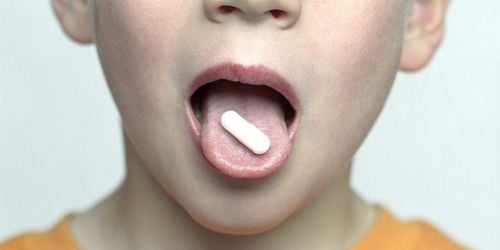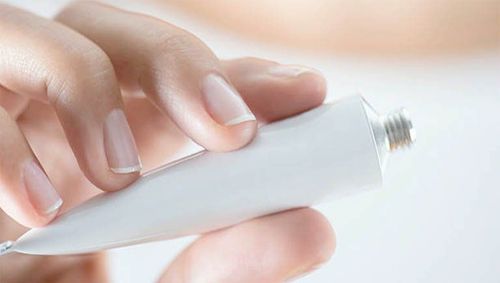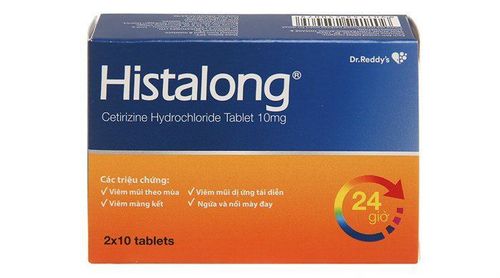This is an automatically translated article.
The article was professionally consulted with Doctor Vo Ha Bang Suong - General Internal Medicine - Department of Examination & Internal Medicine - Vinmec Phu Quoc International General Hospital.Bed bugs are insects that feed on the blood of humans and many other animals. Animals often take refuge in beds and objects near the bed, where it is easily accessible to humans during sleep. Bed bug bites can heal on their own or can be treated simply with topical creams and antihistamines.
1. Characteristics of bed bugs
Bed bugs are small parasitic insects, reddish brown like cockroaches but lighter. Their bodies are flat and small. Adults are only about 5 – 9mm in size. Bed bugs bite the skin of humans or animals while they are sleeping to feed on blood. After feeding on blood, they turn dark red and elongate like some other insects. Although bed bugs are not contagious, they can have an economic and public health impact.2. Bedbug hiding places
Bed bugs usually live where people can be reached during their sleeping hours. Bedbugs hide in the cracks and crevices of:Mattress Box springs Bed frame Bed headboard Items near beds Bed bugs can also be found in:
Under items with peeling paint Scratches and pictures hanging off the wall Under rugs near the baseboard In the seams for furniture upholstery Under light switches or electrical outlets
3. Routes of transmission
Bed bugs can be spread between family members, in kindergarten classrooms through items such as blankets.Bed bugs can move from place to place in the house by crawling on floors, edges of walls or on objects. Bed bugs can crawl like ladybugs and can easily move between floors and rooms in a hotel or apartment complex.
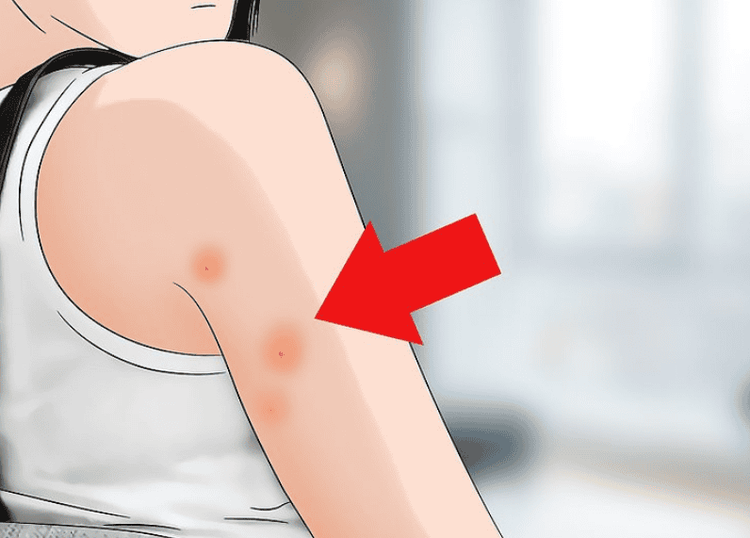
Rệp giường cắn để lại vết cắn màu đỏ ngứa trên da
4. Symptoms of bed bug bites
Bed bugs bite humans for refuge, leaving bites on the skin, often characterized byRed, often with a darker red spot in the center Itching at the bite Scattered or clustered bites Located on face, neck, wings hands and hands Some people have no reaction to bedbug bites, while others have allergic reactions that include persistent itching, blisters or hives.
5. Diagnosis of bed bugs
If you suspect you've been bitten by bed bugs, check items for evidence of bed bugs in your home. Double-check crevices in walls, mattresses, and furniture. You should check at night, when bed bugs are active.Signs of bedbug existence in your home include:
Black spots: Usually found along mattress seams, these spots are bed bug droppings. Post-molting crust: Bed bugs molt 5 times before becoming adults. The molt shell is pale yellow. Rust or red spots: You may find red streaks on your bed sheets where you accidentally crushed a bedbug.
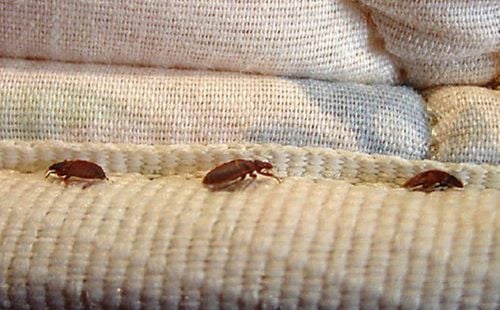
Rệp giường sống trên nệm
6. Bed bug treatment
6.1 Symptomatic treatment The itchy red spots associated with bedbug bites usually go away on their own within 1-2 weeks. Supportive drugs can be used:Skin cream containing hydrocortisone Antihistamines Antibiotics if there are signs of superinfection 6.2. Killing pathogens You should prevent bed bugs from being bitten by treating bed bugs in your home. This can be difficult because bed bugs hide well and can live several months without food. Your best bet is to hire an exterminator who can use a combination of insecticides and chemical-free treatments.
Non-chemical treatments may include:
Vacuuming: Thoroughly vacuums bed bugs from cracks and crevices in household items. Laundry: Washing and drying clothes in the dryer on high heat can kill bed bugs in clothes or linens. Cold heat: Bed bugs can be killed at temperatures below 32 degrees F (0 degrees C). However, this is not feasible because you have to leave items containing bedbugs in the freezer for a few days. Heat: Bed bugs can also be killed at 122 degrees F (50 degrees C) with some professional exterminators. In some cases, you may need to remove heavily contaminated items such as bed mattresses or couches.
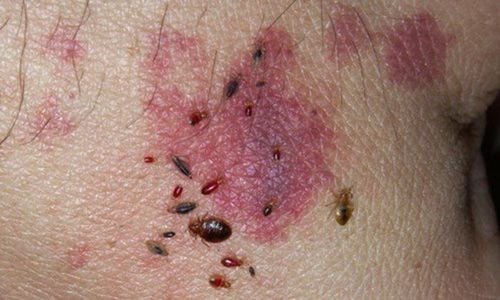
Hình ảnh rệp giường cắn người
7. Prevention
7.1 Preventing Bites Covering: Since bedbugs don't tend to get into clothing, you can avoid being bitten by wearing pajamas that cover as much of your skin as possible. Insect sprays: Insect repellents designed to protect against mosquitoes or ticks are not so effective against bedbugs. Mosquito nets: Bed nets impregnated with permethrin can help protect sleepers against bed bug bites. However, this practice may increase the risk of drug resistance. 7.2 Prevent Bed Bug Growth Secondhand: Carefully inspect bedding items and upholstered furniture before bringing them into the home. Check hotel rooms: Check mattress seams for signs of bedbug droppings, and place your luggage on a table or cupboard instead of on the floor. Birds and bats: Eliminate living conditions for birds and bats, which can be hiding places for bed bugs.Please dial HOTLINE for more information or register for an appointment HERE. Download MyVinmec app to make appointments faster and to manage your bookings easily.






